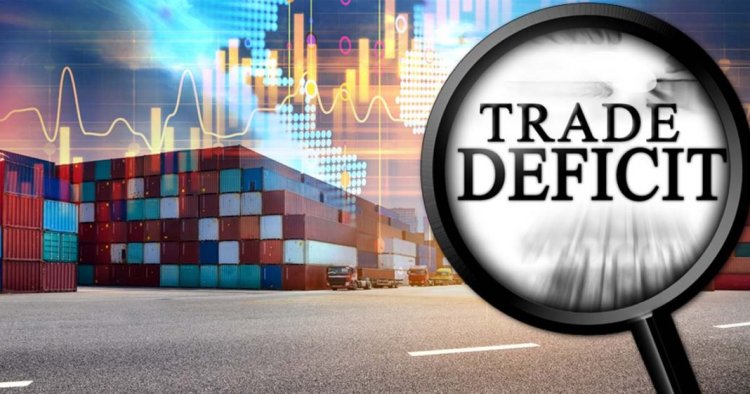In Q1, the trade deficit decreases by 42%.
Drops to $5.3b on reduced imports, while export sector poses challenges

In the first quarter of the fiscal year, Pakistan's trade deficit shrank by 42% to $5.3 billion, mostly as a result of a sharp decline in imports, which prevented the nation's exporters from taking full advantage of the currency devaluation that had occurred over the previous year.
The strain on foreign exchange reserves, which have not yet begun to accumulate despite the International Monetary Fund (IMF) agreement, has decreased as a result of the $3.9 billion reduction in the trade deficit in just three months.
The national statistics collection organization, Pakistan Bureau of Statistics (PBS), announced that during the July–September quarter of the current fiscal year, the difference between imports and exports decreased by $3.9 billion, or 42.3%.
In comparison to the same period last year, Pakistan's imports of products decreased by $4.1 billion, or more than one-fourth, to $12.2 billion during this period. After the government removed administrative constraints and waived regulatory duties, there was an expectation that imports would rise.
The first three months' imports accounted for about one-fifth of the $58.7 billion annual target.
In other words, every dollar that is saved by reducing imports relieves pressure on the reserves, which are still only sufficient to fund imports for 1.5 months. In order to qualify for commercial financing from the World Bank, the nation must have an equal import cover of at least two and a half months. However, since Pakistan mainly depends on imported raw resources for manufacturing, a shortage of raw materials is hampering industrial output.
During a briefing on draft policy papers held last week, World Bank representatives mentioned that importers were still having trouble bringing in commodities from the non-essential category.
The European Union's complaints and the insignificant effect of increased taxes on reducing imports led to the government's recent rejection of a proposal to apply regulatory duties of up to 100% on used cars and luxury imports.
The Tariff Policy Board was presented with suggestions to apply regulatory taxes on some 125 imported commodities. The Tariff Policy Board, however, postponed the issue and did not support the suggestions. Because there are so few imports of luxury items, these import restrictions have not been successful in reducing imports.
It's important to remember that Pakistan totally removed regulatory taxes on the import of secondhand automobiles with engines up to 1,800cc six months ago.
The PBS revealed that during the July-September period, exports decreased by 3.8%, amounting to barely $6.9 billion—a $271 million decline in just three months. The quarterly exports amounted to 23 percent of the $30 billion yearly goal.
Under the guise of regionally competitive tariffs, the textile sector has been requesting state subsidies; however, the poor performance of these subsidies, which they have been receiving for decades, has made it difficult for them to win support.
The rupee lost about 60% of its value compared to the US dollar during the course of the previous year, giving exporters a potential competitive edge. High business expenses, erratic economic policies, and exporters' inability to innovate and climb the value addition ladder, however, somewhat balance these advantages.
The government's expected $26 billion shortfall in external financing for this fiscal year has not been closed due to low exports. The government is having trouble raising money through overseas commercial loans and issuing Eurobonds.
Exports totaled less than $2.5 billion in September alone, up just $28 million, or roughly 1.1%, over the same month the previous year. Year-over-year, imports fell by 25.3% to less than $4 billion. In September, the trade deficit shrank by 48% to just $1.5 billion, which was $1.4 billion less than it was in the same month the previous year. Likewise, as exports rose by 4.1% and imports decreased by 12.7%, the month-over-month trade imbalance narrowed by 31%, amounting to $1.5 billion.


 khushboo_ghori
khushboo_ghori 





